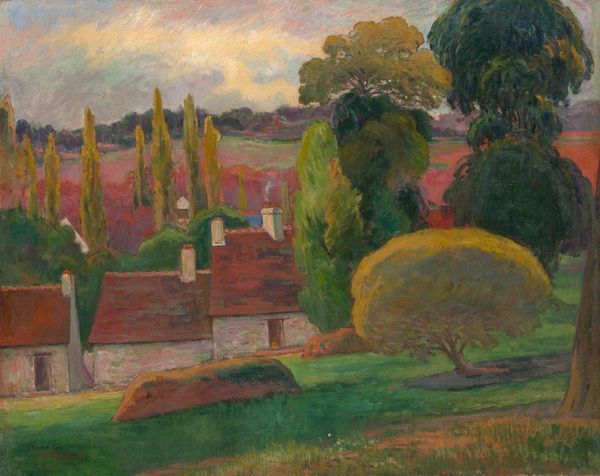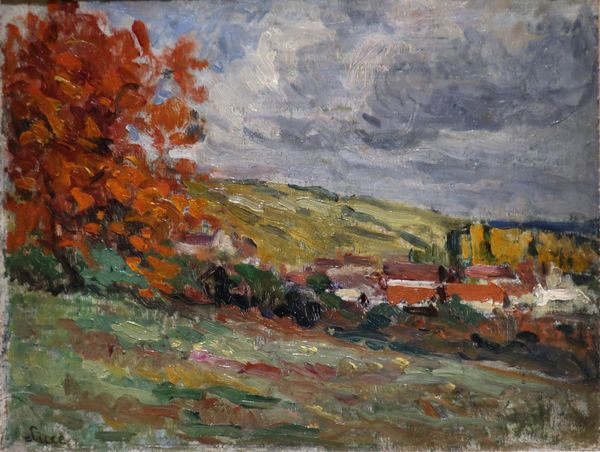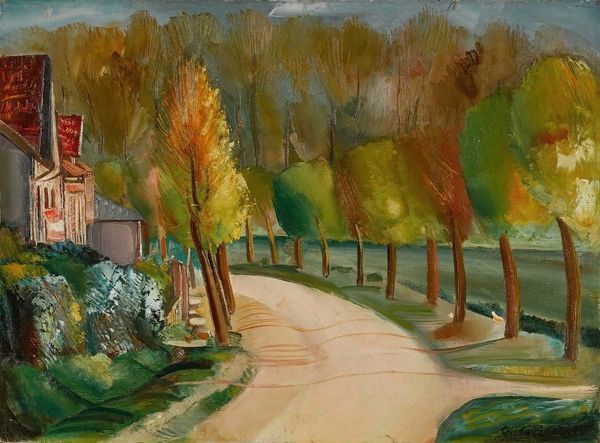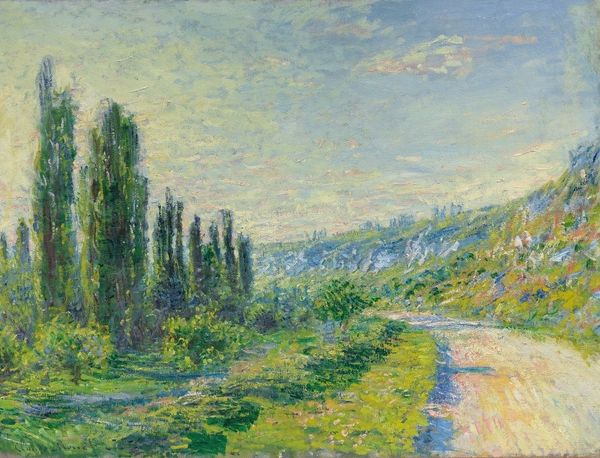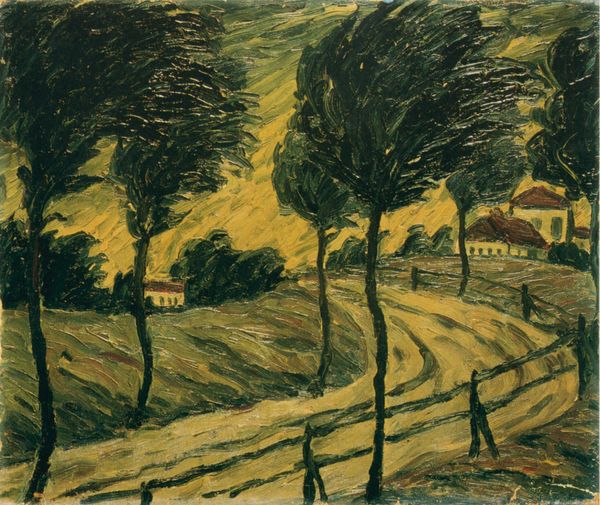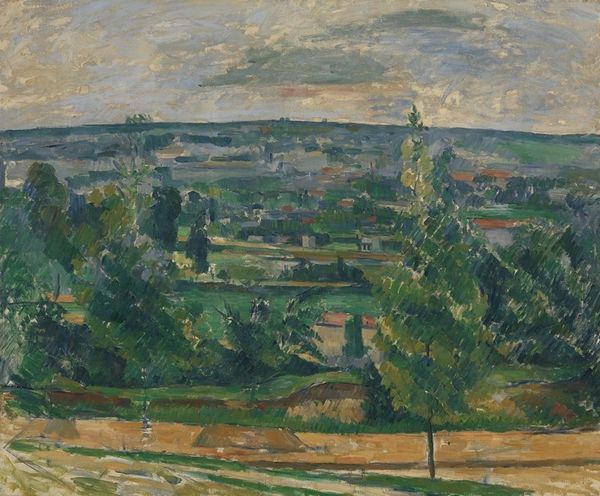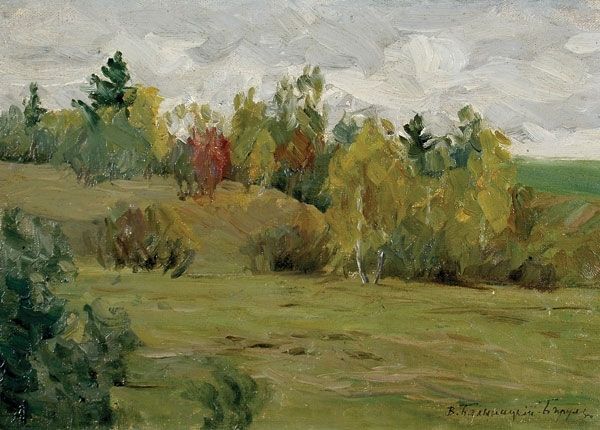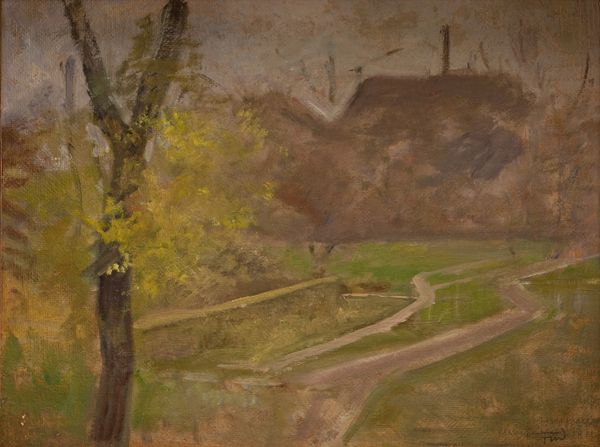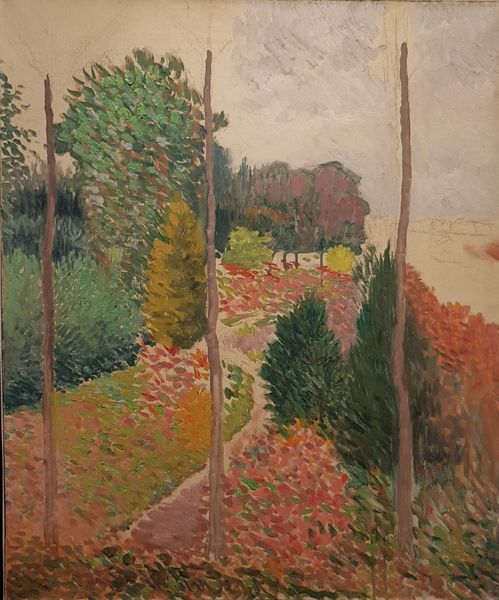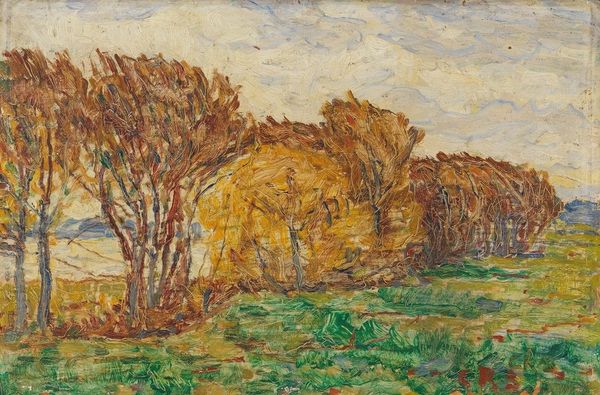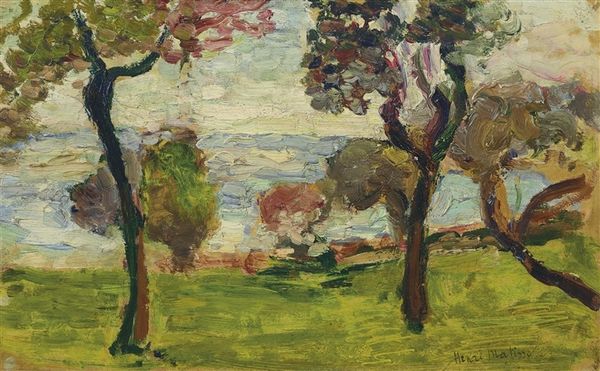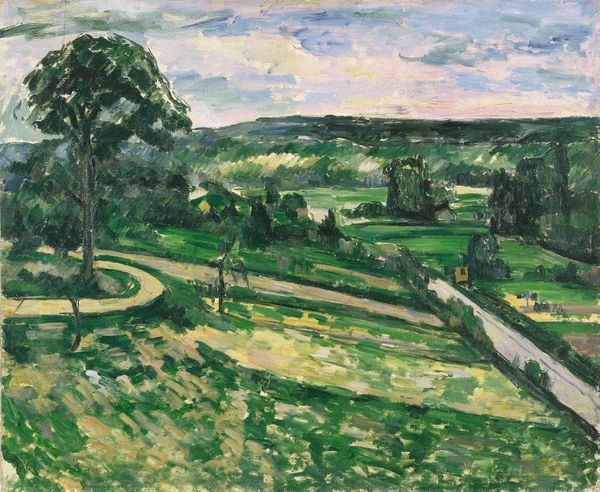
painting, oil-paint
#
painting
#
oil-paint
#
landscape
#
oil painting
#
cityscape
#
modernism
#
realism
Copyright: Public Domain: Artvee
Curator: This is Jozef Hanula's 1923 oil painting, "The Outskirts Of Spišská Nová Ves". Editor: My initial reaction is one of understated beauty. The autumnal tones and overcast sky lend it a melancholic but grounded quality. Curator: Indeed. Hanula situates the viewer on the periphery, framing the town through the lens of nature. Consider how this vantage point implicates our understanding of community and belonging. Where is Hanula really placing us here socially, politically, and economically in relationship to this town? Editor: Well, it appears the outskirts themselves are carefully cultivated. Notice the deliberate placement of the trees lining the road. Their very arrangement suggests labor, intent, and a managed relationship between the town and its surrounding environment. Curator: Precisely! It invites a dialogue on land use and control, reflecting, perhaps, broader questions of national identity in the wake of Czechoslovakia’s formation just a few years prior. How might this image be speaking to contemporary Slovakian anxieties of urbanization? Editor: Absolutely. There's a definite tension there. On the one hand, it acknowledges the picturesque beauty of nature, but also underscores how that nature is harnessed and transformed, consumed almost, to shape the approach to urban space. The materials themselves—the pigments, the canvas—are implicated in that cycle of production. Curator: And think too about Hanula, as an artist, grappling with Modernist impulses within a traditionally realist landscape. What do you think he is negotiating with the historical artistic canon and his role as an artist working in that liminal space of progress? Editor: He seems very aware of the relationship, literally and figuratively, of near and far, insider and outsider. And even the very paint handling—visible brushstrokes—speak to the physical act of its making, its material origin, pushing beyond a purely representational role. Curator: So it’s really in this tension, I think, that Hanula presents us with questions, not answers, about societal evolution. Editor: It encourages us to consider not just the finished product, but the human agency, the social history embedded in both the subject and the creation of art itself. Curator: It's a humble landscape but offers so much for us to investigate if we spend the time considering not only its historical setting, but also its production and continued cultural relevance.
Comments
No comments
Be the first to comment and join the conversation on the ultimate creative platform.
